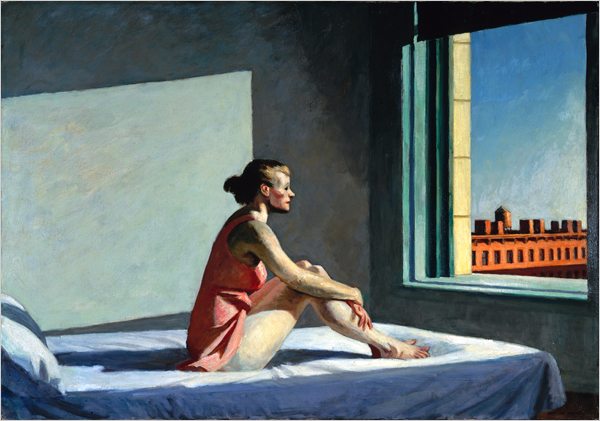Excerpt, p. 185-187; emphasis mine:
Once art becomes anything other than a singular vision — and I’m not saying it has to be one guy or one girl, it can be a trio of people or whatever, I’m sure you’ve collaborated with people before — but one way or the other, art has to come from people who are headed toward the same goal.
When they started testing everything — okay, look, you can test a tube of toothpaste and have people taste it and go, “Yeah, it’s a little gritty, and it’s not quite as sweet as this other one.” Okay, fine, do that. You got to put the stuff in your mouth. But art by nature is a vision, a singular vision.
Let’s take Edward Hopper, he’s one of my favorites. Edward Hopper is doing a painting. Let’s suppose that in that painting you have a director, a producer, and a studio just as you do in movies. In this scenario, Hopper is the writer and actor, and he shows his painting to Bud and Carl, the producer and the director. They say, “Yeaahhhh, Edward, it’s nice, real nice, I like that, it’s kinda moody. We’re just afraid that it’s kinda lonely for what we’re going for here.”
And Edward Hopper responds, “Well, that’s the point. The goddamn painting is called Loneliness. It’s a woman sitting on the edge of her bed in a seedy motel with a motel sign outside and a diner on the corner. And you’re supposed–”
“Yeah, yeah,” the producer interrupts, “we get that, but the problem with it is, we don’t really know what she’s thinking. We want the people who come to our art shows to know what the painting means. We want them to know what she’s thinking. So let’s just way she’s not sitting on the bed, just motionless like that, staring at the wall. What if she’s looking out the window at that diner? Then we think maybe she’s waiting on someone to show up at that diner.”
Hopper says, “Well, the point of this is, we don’t know what she’s thinkin’.”
“Why would you want a painting where nobody knows…” and a big argument erupts.
Hopper storms out of the room saying, “Fuck you guys.” But those guys put up the money, so the next thing you know there is no Edward Hopper. His name’s on it, but the producer’s and the director’s names are on it too. Now the painting is a lot brighter, the colors aren’t muted like other Edward Hopper paintings. It’s red and blue and the diner’s brighter. She’s looking out the window with the suggestion of a smile on her face, so you know she’s probably waiting on some dude who’s coming to the diner, who she’s in love with. Now you got a painting!
It shouldn’t be that way. And that’s what I’ve been dealing with ever since I tried to be any kind of an artist. I use Edward Hopper’s paintings as inspiration for my production design when we make movies. Sling Blade was made based on the look of an Edward Hopper painting and the feel of an Edward Hopper painting. That’s what I always try to do.
But the fact of the matter is, Edward Hopper didn’t have to go to Denver, Seattle, Minneapolis, and Dallas and have a bunch of people in stretch pants say they didn’t like his painting, or tell Picasso the eyes were off-center. “Why are the eyes not together? We think you ought to put the eyes on the same level like real people’s eyes are.” The next thing you know, there wouldn’t have been a Picasso. Unfortunately, we work in a business where they can actually tell you how they want you to end a movie. Art no longer exists when the audience is the judge before it’s finished, or before it’s put out to the public. How is that art? It can’t be. They’ve already screwed it up. If the people can create what they want to see, who cares? I’m saying you should have the opportunity to like or dislike something based on a single vision because if it’s not that, it’s not art. There’s bad art, good art, mediocre art, kind of good art, all kinds. That’s the beauty of it. If the audience has already become the artist, then it’s not art.






